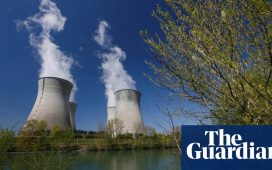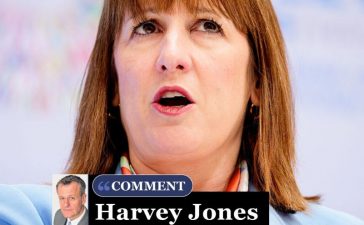Centrica’s record-beating results last week caused predictable outrage in the UK. Tripling profits after one of your businesses has been outed for forcibly installing prepayment meters in the homes of vulnerable customers is not a good look.
The scandal has shone a spotlight on the problems with the meters, which make customers pay in advance for their power and often charge higher rates. The regulator has now ordered suppliers to suspend the practice of forcibly installing them.
But it has also sparked a debate about the bigger question of who should pay what in the UK energy system, given high prices and the need for billions of pounds of investment to get the country ready for cleaner and greener power.
There is very obviously a significant affordability problem at the moment. Rising prices have increased fuel poverty. The number of households not paying their bills rose above 2mn in the middle of last year, according to regulator Ofgem.
Energy companies do not elicit much sympathy, but that is a worry for them. According to consultancy Cornwall Insights, suppliers might struggle to recover more than £1.9bn of debt. Centrica makes a good chunk of money from its upstream and trading divisions, but businesses that rely on selling power in the retail market have fewer get-outs if customers cannot pay.
The new investment needed for the “energy transition” from fossil fuels is estimated at more than £1tn by 2050, to build renewable generation, networks, storage capacity and the like. This exacerbates the problem — it all needs to be paid for somehow, although over time cheaper solar and wind power will offset this.
Under the current system, higher energy costs mean higher bills for consumers across the board. The costs of maintaining and upgrading the UK network, and of some government social and environmental policies, find their way into standing charges — a fixed sum paid by everyone in their bill — plus an extra charge levied on each unit of energy consumed.
There are two reasons to consider reviewing this system.
The first is affordability. Consumers are already stretched, with high utility bills coming on top of rising mortgage payments and inflation. Dieter Helm, a professor of energy policy at Oxford university, has said that 10mn people were in some way struggling with their bills at the end of 2022. And energy is not the only area where a big investment programme is required. The water, sewage and railway networks are all in need of serious spending for upgrades.
This explains why the government has said it will consider subsidised “social tariffs” for some.
The second reason to take a closer look at how energy costs are allocated is to encourage people to make choices that help the country reach its 2050 net zero carbon emissions target. Switching to greener power and using energy at off-peak times should all help reduce the need for production, transport and storage capacity.
Switching energy use to quiet times could save the UK a cumulative £113bn by 2050, according to consultancy Aurora Energy. But if you want more people to run their washing machines in the middle of the night, you probably need to make it worth their while. The higher the share of the energy bill that’s related to fixed costs such as maintenance and policy, the lower the potential gain from changing behaviour. Cornwall Insights estimates that fixed costs will account for 45 per cent of energy bills by 2026-2027.
A number of potential solutions are doing the rounds.
One idea is for a specially designed social tariff. This would cap the cost of the energy used and also cut fixed costs to encourage changes in consumption. Another idea is to allocate more of the fixed costs to energy used at peak time.
Shuffling costs around does, of course, have risks. Fairness is an obvious concern. So is efficiency. When costs are moved further away from people who use services, for example if more of them were moved into general taxation, it can be harder to keep a lid on them. Yet to many, the current system doesn’t feel equitable. And as fixed costs rise, it increasingly doesn’t provide customers with the right incentives. It’s time to make a change.
Climate Capital

Where climate change meets business, markets and politics. Explore the FT’s coverage here.
Are you curious about the FT’s environmental sustainability commitments? Find out more about our science-based targets here










